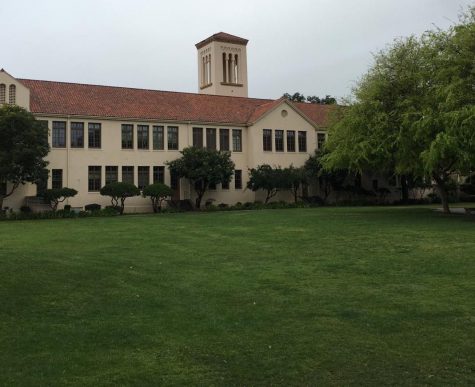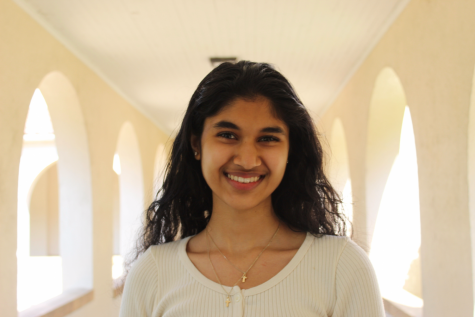Principal talks connection, community as Board reopening vote looms
November 10, 2020

Citing urgency for face-to-face interaction, the Palo Alto Unified School District is pushing secondary school partial reopening in January. Hybrid and remote learning proposals for secondary schools are on the agenda for Tuesday evening’s school board meeting and could pass with a one-meeting board vote despite concerns from students, parents and community members, giving families a single week in which to choose which route to take for the coming semester.
As the main authority who would be responsible for carrying out the plan at Palo Alto High School, Principal Brent Kline is thinking a lot about student mental health, the school community and student-teacher relationships that thrive off of real-life connections.
“Most important time we can have as a school community is to bring a reconnection back,” Kline told The Paly Voice in an interview on Friday, Oct. 30. “You all need to be back together with your peers so that you can interact as high school students should … you need each other for that support of each other. Because think about it, it’s been close to six months now that we’ve not had that.”
The proposed plan for January is two-fold, offering distance and partially in-person (hybrid) options. Distance-learning will flow similarly to the first semester virtual scenario, with daily synchronous classes and interaction with teachers and classmates via Zoom from Tuesday through Friday and a Monday schedule to be determined. The hybrid model, on the other hand, would follow the same bell schedule but also permit students to attend English and History courses in-person one or two days per week, depending on the number of students selecting the hybrid mode.
Cohorts of a maximum of 14 students will attend in-person classes, separated on campus by grade level — however, there is a possibility that distance classes may increase in size as a result. Students would attend in-person classes either before or after lunch with a one-hour break to travel to and from school. Six-foot distancing and other safety measures will be implemented — they may, consequently, drastically alter the in-person learning experience.
Currently, the district is expecting approximately 30 to 40 percent of students to choose hybrid, according to Kline at Monday night’s parent question-and-answer meeting. Families will have until Nov. 18 to make a binding decision between distance or hybrid, and will receive second semester schedules by Dec. 14, according to Kline.
Unfortunately, Kline said, neither hybrid nor distance modes will guarantee continuity of teachers and classes beginning in January. Not only would a shift in teachers and courses interrupt student learning, many parents said at Monday’s meeting, but it would also damage juniors’ prospects for college applications as they look to cultivate relationships with teachers for college recommendation letters.
“Trying to maintain the same student-teacher connections so that you’re remaining with the same teacher,” Kline said in the Zoom interview with The Paly Voice. “I’m hoping to really maintain that.”
A secondary school district survey issued on Thursday, Oct. 29, showed approximately 60 percent of students and parents leaning towards hybrid or partially-hybrid classes, with the other 40 percent in favor of full distance learning. According to Kline, the district angled preparations towards a hybrid proposal for January based on these results.
However, many students are now finding distance-learning to be the more appealing option after learning of the limitations of the hybrid plan such as limited in-person time, few in-person class options and schedule changes. Low signups could possibly entail more in-person class time or a shift in the hybrid plan.
Teacher input is paramount, according to Kline, and the district is surveying staff members as well. Livestreaming classes to accommodate both in-person and distance students at once is “looking less and less like an option,” though the details have not yet been ironed out.
Site Council member Anna Itoi emphasized Kline’s and her desire for students to outline their needs in order for the school to make supportive decisions. To achieve School Plan for Student Achievement goals, Kline said he is meeting with a subset of nine students who will benefit from the equity plans to ensure that their needs are at the forefront.
“Instead of assuming that we know the answer to how to address things like the equity priorities that have been on our plate for many years, before we just launch a plan, ask the students what’s working and what’s not working for them,” Itoi said.
Kline said he is reaching out to students who received Ds and Fs last quarter to pinpoint underlying issues, as well as offering the PAUSD+ program as an option if in-person support or school internet access would be beneficial.
Both Kline and Itoi recognized teachers’ heroic efforts to engage with students while miles apart in distance learning, allowing the school community to still flourish despite the circumstances.
“I’ve seen this tremendous cooperation between parents and students and teachers that is really inspiring to me,” Itoi said. “I hear the beauty, the loving tone of teachers voices … it just fills me with gratitude because I feel very close to them.”
Echoing Itoi’s sentiment, Kline, as a new principal, expressed appreciation for Paly staff and said he looks to bring their expertise to the forefront with next semester’s plans.
“The teachers are Paly, I’m going to say a different than a lot of teachers that I’ve met,” Kline said. “I feel that there are strong connections that these teachers have within their disciplines, their worlds. And there’s a lot of support. And I’m excited to connect all of those together.”


